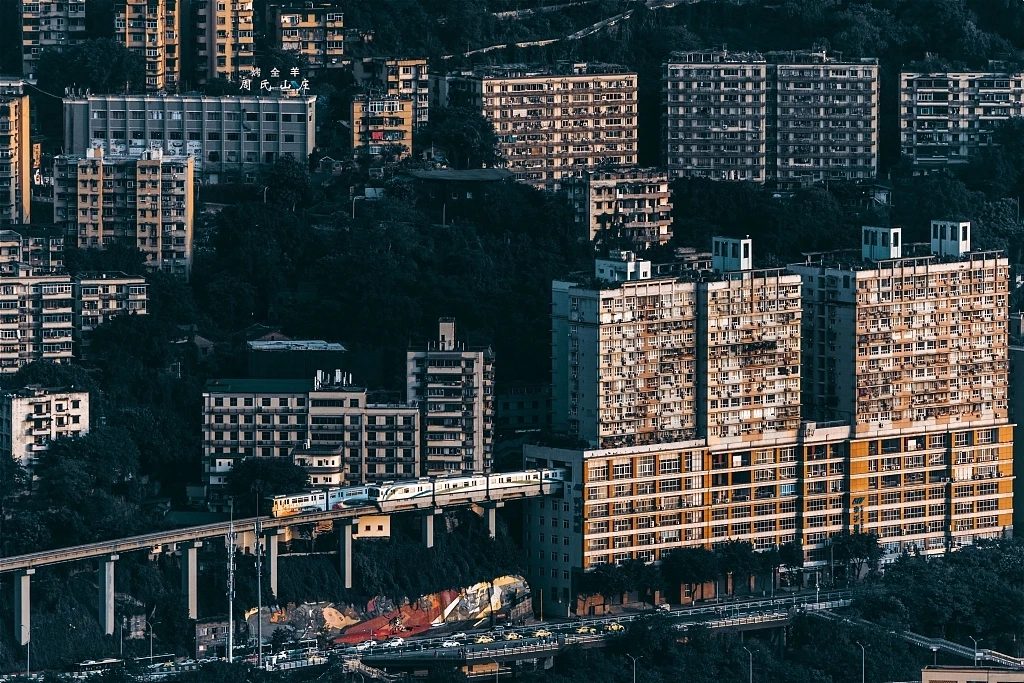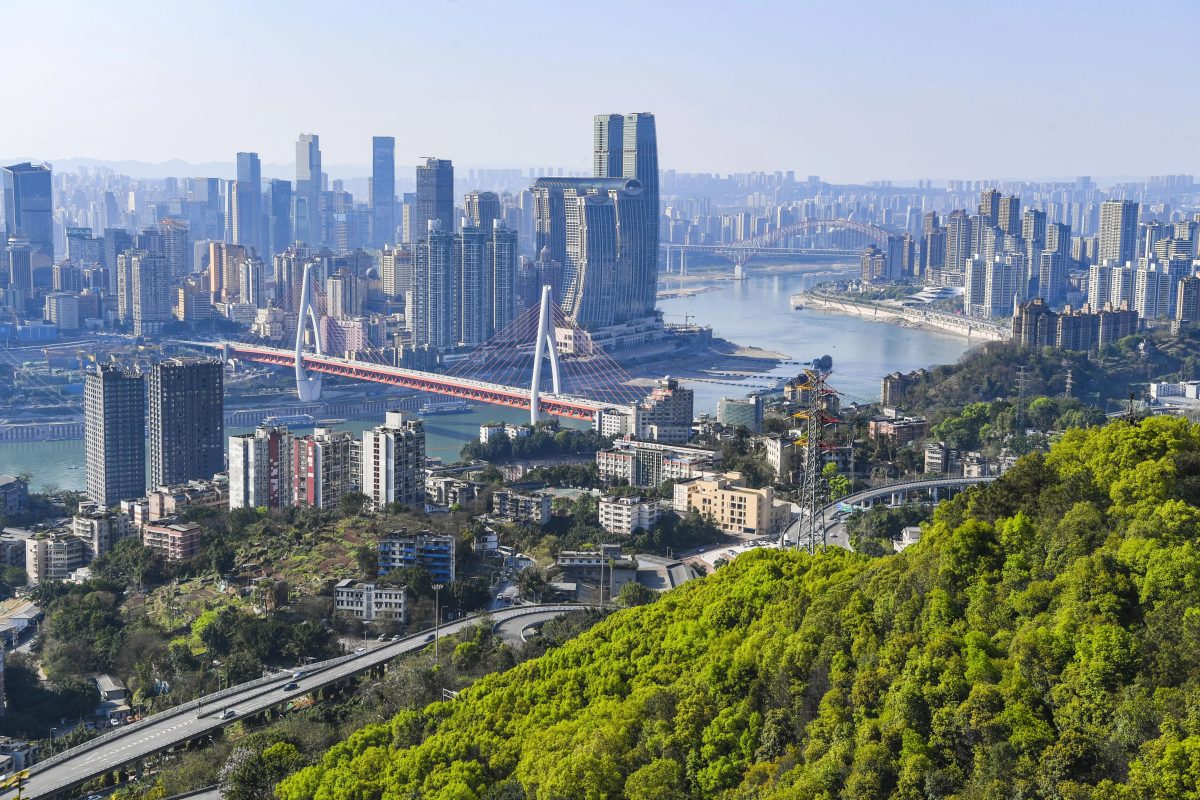Chongqing, a metropolis that combines “vertical city” and “cyberpunk vibe”, is getting a lot of attention on TikTok and YouTube. Why is Chongqing built like that?
A Miracle in Karst Landscape
Chongqing, the world’s only mega-city built on a karst landscape, is a magnificent epic of mankind’s struggle with the terrain.
Located at the confluence of the Yangtze and Jialing Rivers, Chongqing is surrounded by rolling hills and canyons. 76% of the city’s area is covered by mountains, making it a city that has to reach for the sky to find space to survive and thrive.

The Symbiotic Wisdom of a Vertical City
Chongqing’s “three-dimensional gene” stems from its unique geographical environment. The Yangtze and Jialing Rivers converge here, cutting steep gorges, and 85% of the land is mountainous. To meet this challenge, Chongqing people have pushed the city into three dimensions.
Architectural wonders: Hongyadong, a complex of 11-story hammock towers, is built on a hill and extends from the river to the top of the hill, creating a vertical shopping street. White Elephant Residence, a 24-story residential building with no elevator, connects three streets through three exits at different heights, like a “24-story Rubik’s Cube”.
Transportation revolution: Chongqing’s transportation system is even more breathtaking. There is a unique cableway across the river, known as the “air bus”; there is Asia’s longest escalator – Crown Escalator; there is a train through the building of the Liziba station,, as well as the intricate Huangjiaoping overpass. These transportation facilities together constitute Chongqing’s “8D magic transportation system”.
The City of Bridges: Chongqing has more than 1,300 bridges, a density far exceeding that of other cities, and is known as the “City of Bridges”.

Cyberpunk Visual Feast
Chongqing at night is a surreal picture, known as the “real-life version of Blade Runner” by foreign media.
Hongyadong Night View: When night falls, the golden hammock buildings of Hongyadong are reflected in the river under the light, and the stream of light from the Qianlianmen Bridge, forming a stunning picture. the hashtag #ChongqingNightview on TikTok has been played more than one billion times.
Two Rivers: Chaotianmen Wharf is the confluence of the Yangtze River and the Jialing River, and at night you can enjoy the LED light shows of skyscrapers on both sides of the river, such as the “Sailing in the Sky” at Raffles City.
Hidden corners: the Nanshan One Tree Observation Deck overlooks the city’s bright lights, while underground air-raid shelters transformed into hot-pot restaurants and bars hide Chongqing’s unique dark aesthetics.
Multi-dimensional narrative of history and culture
The magic of Chongqing is not only reflected in space, but also in the intersection of time and cultural accumulation.
Bayu Culture: The Buddhist statues in Dazu stone carvings, the green stone road in the old town of Maguikou, and the hand-swinging dance in the Tujia footstools together tell the legendary story of 3000 years of Bayu culture.
Wartime Memory: As the capital of China during World War II, Shapingba’s “Culture Dam” was home to many master artists, while Bai Gong Guan and Jagged Cave remember the glory days of the Red Rock Spirit.
Fireworks: The high-end shopping centers of the Jiefangbei shopping district and the street-side noodle stalls are the perfect counterpoint to each other, while the old teahouses of the 18th Staircase can still hear the sounds of the “Dragon Gate”, showing the unique atmosphere of Chongqing’s rivers and lakes.
Taste Adventure: Spicy Kingdom of Tongue Carnival
Chongqing cuisine is the ultimate challenge for the senses. In the Nine Palace Butter Hot Pot, the “time law” of tripe and yellow throat is the survival wisdom of the locals; pea noodles, hot and sour noodles, spicy chicken and other legendary food in the marketplace hide the story of Jianghu. With more than 30,000 hotpot restaurants and an average daily consumption of 50 tons of chili peppers, Chongqing is the “spiciest city in the world”.
Epic landscapes of nature and humanity
Wulong Karst: The Tiansheng Three Bridges, a World Natural Heritage Site, was the setting for Transformers 4, and the Tianlong Sky Pit under the Qinglong Bridge has an amazing drop, like an extraterrestrial landscape.
The Three Gorges of the Yangtze River: Take a boat across Qutang Gorge from Baidi City, and you can feel the poetic meaning of Li Bai’s poem “A light boat has crossed ten thousand mountains”. In the future, the “High Gorge and Flat Lake” project will reshape the Three Gorges.
Ethnic Minorities: The Tujia villages in the Peach Blossom Garden of Youyang and the non-legacy performances at the Xiushan Lantern Festival show the multiculturalism and charm of Chongqing.
Travel Tips
Best Season: Spring and fall (March-May and September-November) are the best times to visit Chongqing, when there is less fog and moderate rain. In winter, you can go skiing at Fairy Mountain, while in summer, you can escape the heat in the grassland.
Transportation Tips: Take the light rail line 2 to experience the wonderful feeling of the train going through the building; take the Yangtze River cable car in the evening to shoot the sunset view; when visiting Hongyadong, it is recommended to avoid the peak hours from 19:00 to 21:00.
Must-experience: Night view of Nanshan Mountain, hot pot in the air-raid shelter, teahouse in the backstreet of Magtekou, and the two-river ferry are all must-experience programs.
